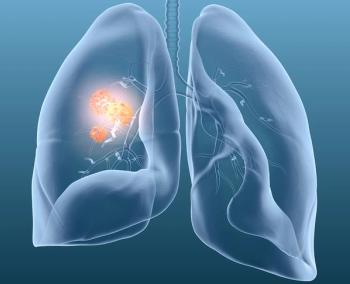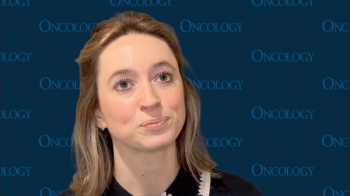
Oncology NEWS International
- Oncology NEWS International Vol 18 No 2
- Volume 18
- Issue 2
Gliomas react to radiation plus chemotherapy
Adult patients with low-grade glioma had better survival if they received chemotherapy in addition to radiotherapy, according to the results of a Radiation Th erapy Oncology Group (RTOG) study. The data were presented at the 2008 Society for Neuro-Oncology meeting in Lake Las Vegas, Nev.
Adult patients with low-grade glioma had better survival if they received chemotherapy in addition to radiotherapy, according to the results of a Radiation Th erapy Oncology Group (RTOG) study. The data were presented at the 2008 Society for Neuro-Oncology meeting in Lake Las Vegas, Nev.
The RTOG 9802 investigators randomized 251 patients with high-risk, low-grade gliomas to receive either six weeks of radiotherapy alone or six weeks of radiotherapy followed by six cycles of chemotherapy (procarbazine, CCNU, and vincristine). For patients who survived at least one year post-treatment, the *risk of death was reduced by 43% while progression-free survival was reduced by 64%. With a median follow-up of 5.9 years, the five-year overall survival rate was 72% for the patients who received the dual therapy, compared with 63% for those who received radiotherapy alone. Five-year progression-free survival rates was 63% for the dual therapy group and 46% for those who received radiation therapy alone.
“In this RTOG study we found that patients who survived at least one year from the completion of their treatment had much better survival and progression-free survival rates if they received chemotherapy in combination with radiotherapy,” said lead investigator Edward G. Shaw, MD, of the Wake Forest University School of Medicine in Winston-Salem, N.C. “Th is is the first multicenter prospective clinical trial to suggest a benefit from adjuvant therapy in this patient population.”
Articles in this issue
almost 17 years ago
Consortium advances multidisciplinary program for colon canceralmost 17 years ago
Celator joins leukemia society for phase II trial of CPX-351almost 17 years ago
Genzyme nabs FDA approval for stem cell mobilizing agentalmost 17 years ago
FDA launches pilot safety program for foreign drugsalmost 17 years ago
Radiation oncology society adopts new monikeralmost 17 years ago
Varian places RT units; offers storage systemalmost 17 years ago
Improvements in Pap screenings proposedalmost 17 years ago
New outlook for neuroendocrine canceralmost 17 years ago
Mismatched cord blood stem cells meet need for urgent Rx in acute leukemiaNewsletter
Stay up to date on recent advances in the multidisciplinary approach to cancer.

















































































